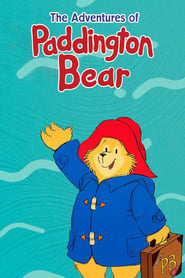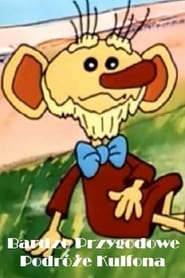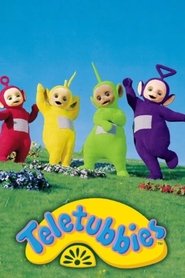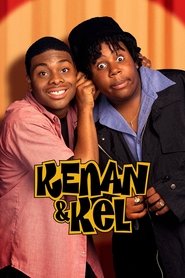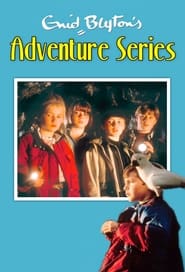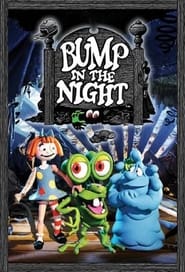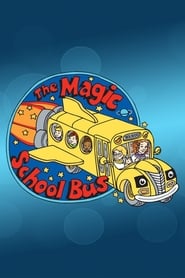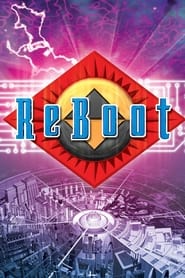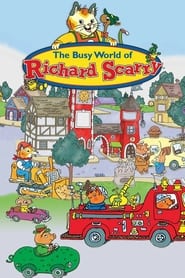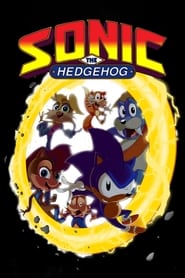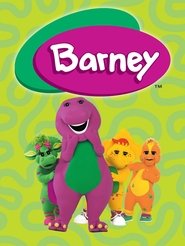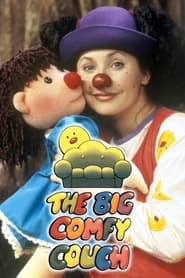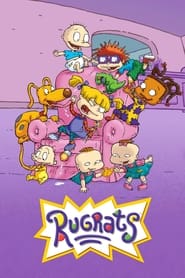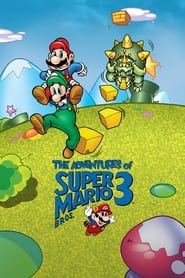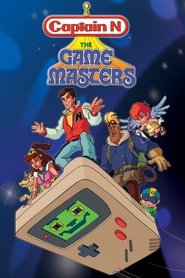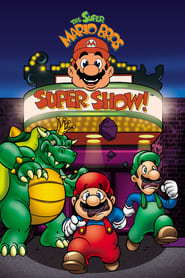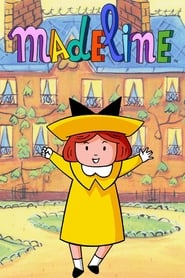New Kids TV Series on Hoopla - Page 7
-
The Adventures of Paddington Bear
1997
star 6.5The Adventures of Paddington Bear was a Canadian/French animated children's television series. It was based on the book Paddington Bear by Michael Bond and written by Bruce Robb. It was produced by Cinar and Protecrea and ran for 117 episodes. The show aired in the United States on the Cookie Jar Toons block on This TV from November 2008 - August 2009. However, all CINAR references in these broadcasts have been replaced by Cookie Jar references. It was also shown on HBO. -
Teletubbies
1997
Teletubbies
1997
star 4.5Pre-school fun, fantasy and education with colourful rotund characters Tinky Winky, Dipsy, Laa-Laa and Po in a magical land called Teletubbyland. -
Hey Arnold!
1996
Hey Arnold!
1996
star 8The daily life of Arnold--a fourth-grader with a wild imagination, street smarts and a head shaped like a football. -
Kenan & Kel
1996
Kenan & Kel
1996
star 8.1Set in Chicago, the show follows the kid-friendly misadventures of two high-school friends who are always scheming and dreaming. Kenan, who works at a grocery store, constantly devises crazy plans to strike it rich, while orange-soda-loving buddy Kel is always dragged along for the ride despite his track record for messing things up. -
The Enid Blyton Adventure Series
1996
star 4Join Philip, Dinah, Lucy, and Jack along with their beloved pet parrot, Kiki, in this unique and contemporary series of breath taking non stop action and adventure. Through rivers, woods, mountains - even a circus - this group of intrepid adventurers make sure that they save the day, although at times it looks as though they might need saving themselves! A whirlwind of fun, excitement and daring, this series will appeal to children and indeed families of all ages where good always triumphs in the end. -
Bump in the Night
1994
Bump in the Night
1994
star 7.1Bumpy, an energetic sock-eating monster who lives under a boy's bed, is constantly getting into mischief, with his friends Squishington and Molly Coddle. -
The Magic School Bus
1994
The Magic School Bus
1994
star 7.6An eccentric schoolteacher takes her class on wondrous educational field trips with the help of a magical school bus. -
ReBoot
1994
ReBoot
1994
star 7.4Bob, a guardian from the Super Computer, helped by his friends Dot, Enzo, and dog Frisket, defend the digital city of Mainframe from evil computer viruses that seek to dominate the city and infect the entire net. -
The Busy World of Richard Scarry
1994
star 7.9Busytown is an enchanting place that's abuzz with energy and life. Young audiences are invited to sing and laugh along as Huckle Cat, Lowly Worm, and other beloved characters from acclaimed author Richard Scarry make their way through the day exploring their happy and lively world. -
Sonic the Hedgehog
1993
Sonic the Hedgehog
1993
star 7Sonic, Tails, Princess Sally, and a band of freedom fighters battle to overthrow Dr. Robotnik, a despotic dictator who conquered their home planet Mobius years ago, and rules it as a polluted industrial dystopia. -
Adventures of Sonic the Hedgehog
1993
star 6.5A comical, light-hearted and gag-driven adventure series based on the titular character, an arrogant and mischievous yet kind-hearted teenage hedgehog with the power to move at supersonic speeds. Sonic, with his idolizing young friend Tails, regularly oppose the wicked Dr. Ivo Robotnik, his robot henchmen Scratch, Grounder and Coconuts, and thwart their plans to conquer their home planet of Mobius. -
Barney & Friends
1992
Barney & Friends
1992
star 5.7Barney & Friends is an American children's television series aimed at children from ages 2 to 5. The series, which first aired on April 6, 1992, features the title character Barney, a purple anthropomorphic Tyrannosaurus rex who conveys educational messages through songs and small dance routines with a friendly, optimistic attitude. -
Big Comfy Couch
1992
Big Comfy Couch
1992
star 7.4The Big Comfy Couch is a Canadian children's television series about Loonette the Clown and her dolly Molly, who solve everyday problems on their "Big Comfy Couch". It aired from 1992 until early 2006. It was produced by Cheryl Wagner and Robert Mills, directed by Wayne Moss and Mills. It premiered on March 2, 1992 in Canada and in 1995 in the USA on public television stations across the country. There is also a Spanish version of the show titled, "El Sofa de mi Imaginacion". It also aired in the United Kingdom on GMTV's kids block. The show's format revolves around Loonette the Clown, who lives with her dolly Molly on the eponymous Big Comfy Couch. Episodes are generally focused on a theme or a lesson. For example, Season 3's episode "Full of Life" explored the concepts of "full" and "empty", while "Sticks and Stones" dealt with name-calling and teasing. -
Rupert
1991
Rupert
1991
star 7.3The classic tales of Rupert Bear and his friends in Nutwood as they embark on magical worlds with enchantment, intrigue, and danger around every corner. -
Rugrats
1991
Rugrats
1991
star 7.6Focuses on a group of toddlers, most prominently Tommy, Chuckie, Phil, Lil, and Angelica, and their day-to-day lives, usually involving common life experiences that become adventures in the babies' imaginations. Adults in the series are almost always unaware of what the children are up to; however, this only provides more room for the babies to explore and discover their surroundings. -
The Adventures of Super Mario Bros. 3
1990
star 7.6The Mario Bros., Princess Toadstool, and Toad protect the Mushroom Kingdom against the evil forces of Bowser and his seven Koopa Kids. -
Captain N: The Game Master
1989
star 6.9A teenager from Earth, is brought to another universe known as Videoland to defeat the evil villainess, Mother Brain, as foretold in an Ancient Prophecy. -
The Super Mario Bros. Super Show!
1989
star 6.9In 1989 the two most famous plumbers from Brooklyn burst out of the Nintendo game world and onto television screens across America. The Super Mario Bros. Super Show! aired weekday afternoons and brought Mario, Luigi, Princess Toadstool and King Koopa more thrilling adventures as cartoon characters. And if that weren't enough, each episode also contained live-action segments featuring Mario and Luigi running their Brooklyn plumbing shop - all before they were flushed down a drainpipe into the Mushroom World. -
Madeline
1988
Madeline
1988
star 5.8A young girl embarks on a series of misadventures, causing her friends and teachers to be worrisome. Based on the children's books by Ludwig Bemelmans.
 Netflix
Netflix
 Amazon Prime Video
Amazon Prime Video
 Apple iTunes
Apple iTunes
 Apple TV Plus
Apple TV Plus
 Disney Plus
Disney Plus
 Google Play Movies
Google Play Movies
 Paramount Plus
Paramount Plus
 Hulu
Hulu
 HBO Max
HBO Max
 YouTube
YouTube
 fuboTV
fuboTV
 Peacock
Peacock
 Peacock Premium
Peacock Premium
 Amazon Video
Amazon Video
 The Roku Channel
The Roku Channel
 AMC+
AMC+
 Kocowa
Kocowa
 Hoopla
Hoopla
 The CW
The CW
 Vudu
Vudu
 Starz
Starz
 Showtime
Showtime
 PBS
PBS
 Pantaflix
Pantaflix
 FXNow
FXNow
 Tubi TV
Tubi TV
 Kanopy
Kanopy
 Comedy Central
Comedy Central
 Crunchyroll
Crunchyroll
 Microsoft Store
Microsoft Store
 Redbox
Redbox
 Sun Nxt
Sun Nxt
 ABC
ABC
 DIRECTV
DIRECTV
 Crackle
Crackle
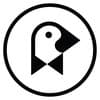 Fandor
Fandor
 Plex
Plex
